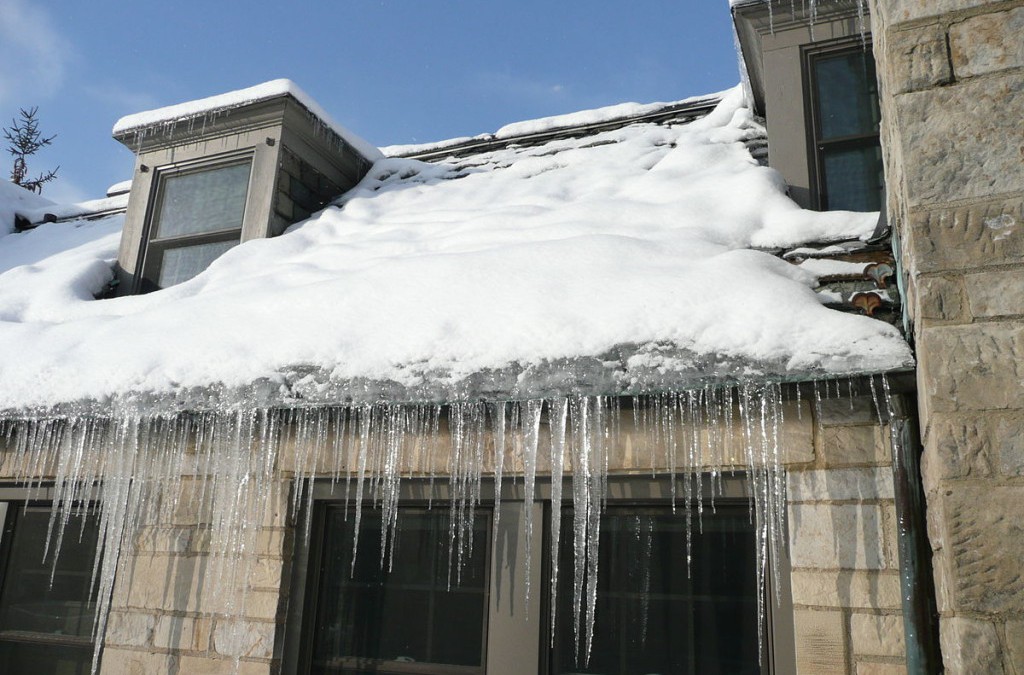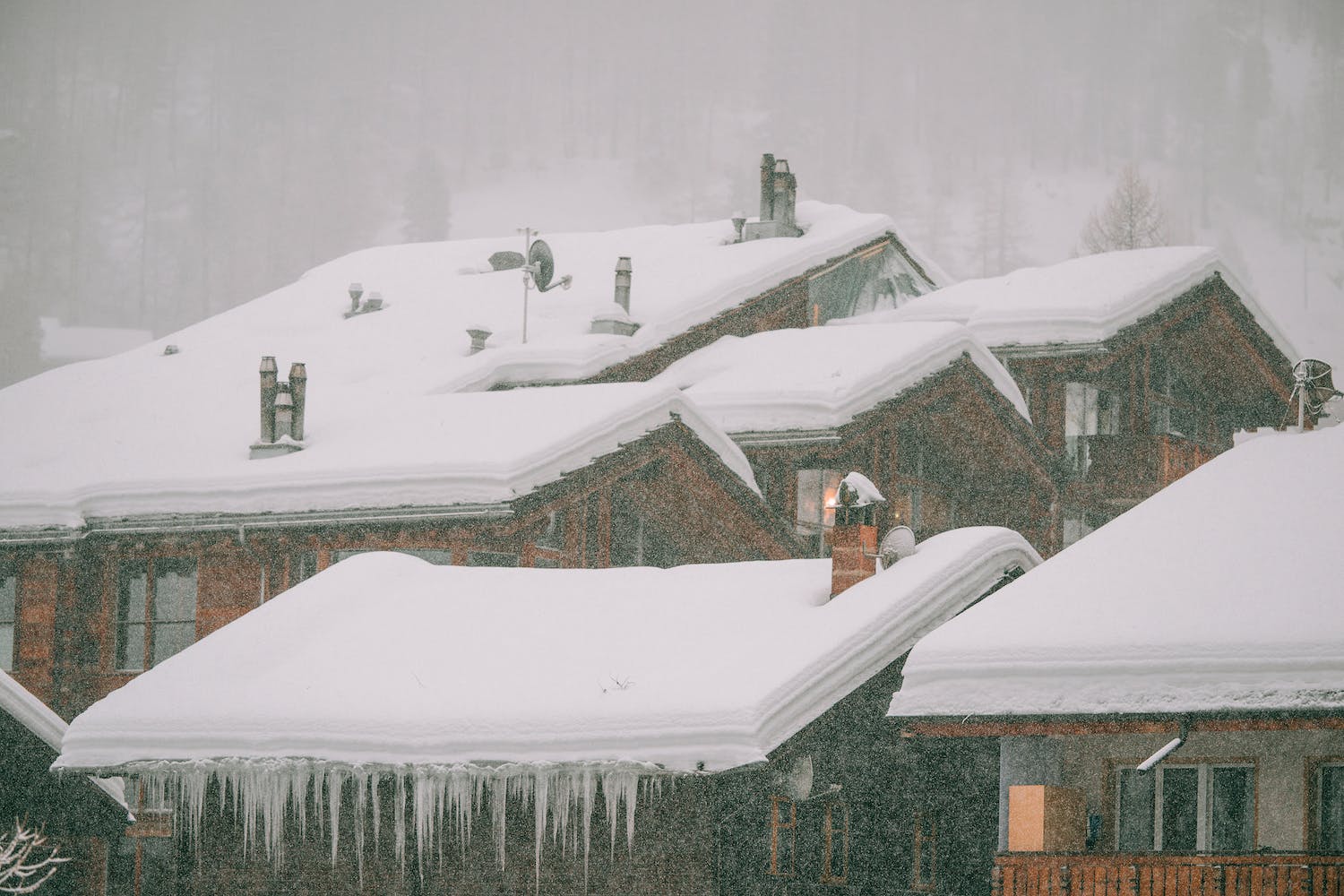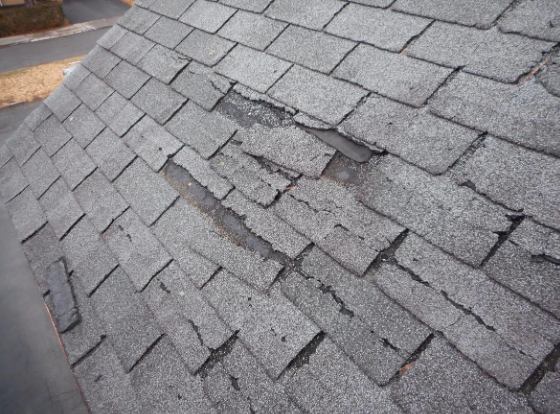Focus on Prevention if you have an Ice Dam problem in Chicago!
If you’re new to Chicago winters, you may be thinking a dam is something a beaver builds, but with the upcoming cold weather, your definition is about to change. If you are wondering what exactly these dams people keep talking about are, here’s an explanation:
“An ice dam is the ridge of ice that forms at the edge of a roof which prevents melting snow from draining as it should. The water that backs up behind the ice dam can leak into the home and cause damage to walls, floors, ceilings, insulation, and other areas.”
Prevention is key to handling this problem, because once a dam accumulates on your roof you will start to have bigger problems. Don’t think that you can wait until it is a full blown Chicago winter to start planning for prevention either, because dams can develop even when there is only a light dusting of snow. Dams are the accumulation of moisture and even small amounts can cause a problem if they are unable to drain properly. This backed up melted water can result is serious damage to your ceiling and walls if it gets under your roofing materials.
Two ways to know whether or not you already have a problem:
Check out your icicles
- Check the exterior of your home for icicles.
- Look to see that they are on the gutters only and that no water is trapped behind them.
- If there is no water trapped, then you’re in good shape.
- However, for the prevention of dams and the safety of passersby, you should safely knock down all icicles.
- If removal cannot be done safely from the ground, you should probably hire a contractor.
Check for stains and dampness:
- Look for water stains or moisture in the attic.
- If you do not have an attic, go to the top floor of your house and check the tops of the tops of all exterior walls.
- Evidence of moisture indicates that water has leaked through the roof membrane.
The Importance of Ice Dam Prevention in Chicago
“Ice dams occur after heavy snowfall when warm air in the attic causes the roof to warm and the snow to melt. Water running down the roof refreezes when it reaches the colder roof edge, forming a mound of ice. The ice traps meltwater, which can seep back up under shingles and drip through the roof into your house, causing wet and stained ceilings and walls, and peeling paint and rot.”
 These dams happen when water thaws and refreezes on a roof forming a mound that prevents additional water from draining off the roof. The important thing to realize, is it doesn’t take a huge storm of a monstrous amount of frozen meltwater to cause a serious problem. A roof with a low pitched roof can encounter serious problems with dams with as little as a one inch mound. This is why it is especially important to be aware of how this problem occurs and the keys for prevention here in Chicago.
These dams happen when water thaws and refreezes on a roof forming a mound that prevents additional water from draining off the roof. The important thing to realize, is it doesn’t take a huge storm of a monstrous amount of frozen meltwater to cause a serious problem. A roof with a low pitched roof can encounter serious problems with dams with as little as a one inch mound. This is why it is especially important to be aware of how this problem occurs and the keys for prevention here in Chicago.
Dams become a real problem when you have meltwater sitting on your roof, unable to go anywhere other than under the roof membrane. When practicing prevention in Chicago, it is important to know the two main causes of meltwater:
- A warm roof
- The freeze-thaw cycle
A warm roof can be caused by inadequate roof insulation and ventilation and lead to heat leaks. The snow melt on the roof over the heated living areas and is unable to run off. The freeze-thaw cycle is the natural cycle of snow melting on warm sunny days and refreezing in the cold night air, but this melting water can cause a major problem if it has no way off your roof.
Chicago Tips for Ice Dam Prevention
 Of course, when it comes to an ice dam, prevention is best. For this reason, it is essential to clear snow off three to four feet from the edge of your roof. This is most easily accomplished with a roof rake. This measure will help to prevent dams from forming, but it will also help to reduce the overall strain on your roof.
Of course, when it comes to an ice dam, prevention is best. For this reason, it is essential to clear snow off three to four feet from the edge of your roof. This is most easily accomplished with a roof rake. This measure will help to prevent dams from forming, but it will also help to reduce the overall strain on your roof.
Another key step to help with prevention is to regularly clear your downspouts. if water is is able to drain through the downspout it will be less likely to stuck standing on your roof where it can lead to a leak.
Long-term tactics for preventing this problem is to insulate your attic. By sealing places where warm air can leak from your house and melt the snow on your roof, you can minimize the potential of a problem caused by a hot roof.
Another option is, if you are looking to get a new roof, opt to install a water repellent membrane beneath your shingles. This may increase the initial cost of a new roof, but it will pay for itself with the damage it prevents by stopping standing water from leaking into your home, causing mold and rot.
While prevention is the best method for avoiding unnecessary damage on your roof, it does not always work. Sometimes despite your best effort an ice dam will form on your roof and then you will need to switch gears from preventing a problem to removing the problem.
Many people recommend diy ways to melt your icy build up, but by far the safest, most effective, and least damaging way to remove dams is to have a professional steam them off.
Turn to Champion Roofing, Inc. in Chicago!
 Champion Roofing, Inc. is a recognized leader in quality roofing. We have over thirty years of experience dealing with Chicago winters and the associated roof problems our client are bound to encounter. Here in the windy city, heaps of snow and icy buildups are an unfortunate fact of life, but when you take the proper preventative steps you can reduce and in some cases entirely eliminate certain problems like dams. However, if you encounter a roofing problem you can’t tackle on your own, we are here, ready, willing, and able to come to your aid!
Champion Roofing, Inc. is a recognized leader in quality roofing. We have over thirty years of experience dealing with Chicago winters and the associated roof problems our client are bound to encounter. Here in the windy city, heaps of snow and icy buildups are an unfortunate fact of life, but when you take the proper preventative steps you can reduce and in some cases entirely eliminate certain problems like dams. However, if you encounter a roofing problem you can’t tackle on your own, we are here, ready, willing, and able to come to your aid!
Featured Image Attribution:
“Ice dam slate roof” by Dmcroof – Own work. Licensed under CC BY-SA 3.0 via Commons – https://commons.wikimedia.org/wiki/File:Ice_dam_slate_roof.jpg#/media/File:Ice_dam_slate_roof.jpg
Ice dam image attribution:
“Sensenwerk Franz de Paul Schröckenfux 2, Roßleithen” by Herzi Pinki – Own work. Licensed under CC BY-SA 3.0 via Commons – https://commons.wikimedia.org/wiki/File:Sensenwerk_Franz_de_Paul_Schr%C3%B6ckenfux_2,_Ro%C3%9Fleithen.jpg#/media/File:Sensenwerk_Franz_de_Paul_Schr%C3%B6ckenfux_2,_Ro%C3%9Fleithen.jpg
.png)



